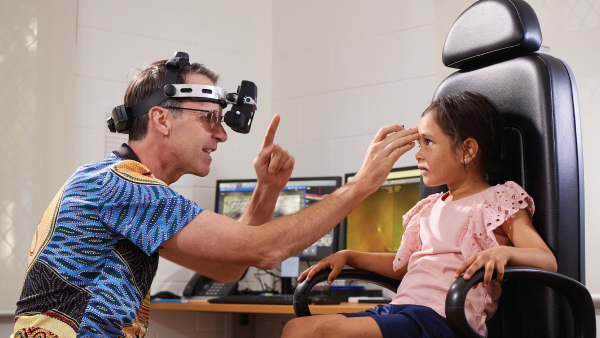You are viewing 1 of your 3 articles before login/registration is required
The Coming of Age for Dry Eye Disease
The novel therapeutic developments and technologies that contribute to better DED management
Despite dry eye disease (DED) affecting millions of people throughout the world, patients went several decades with only a few accessible treatment options. The standard care for the management of DED has shifted from artificial tears and punctal plugs to topical anti-inflammatory products, such as corticosteroids and cyclosporine derivatives. In recent years, clinical scientists and the pharmaceutical industry have worked diligently to elucidate the pathology of DED and discover new therapeutics to target DED’s mechanisms. Although developing and assessing new treatment options provides a hopeful pathway for the future of DED treatment, it is also important to place emphasis on novel technologies that can help deliver the best treatment worldwide.
Novel therapies for DED
Several notable DED therapies have recently been approved by the US Food and Drug Administration (FDA) – and many others, which feature novel mechanisms of action (MOAs), are currently being evaluated in clinical trials. Our current understanding of DED as a multifactorial disease opens up a multitude of potential approaches to pharmacologic intervention – each with its own path to efficacy.
Oyster Point Pharma – Tyrvaya
Recently FDA-approved, Oyster Point Pharma’s Tyrvaya is a preservative-free intranasal formulation of varenicline to treat the signs and symptoms of DED (2, 3). This therapy is a nicotinic acetylcholine receptor (nAChR) agonist and works by activating the trigeminal parasympathetic pathway through the nose, which stimulates tear production. This therapy is approved for twice per day dosing and has been proven to be effective through the ONSET-1 and ONSET-2 pivotal clinical trials. The MYSTIC clinical study demonstrated that the varenicline nasal spray improved tear production over a 12-week period (5). Alongside its nasal instillation, which alleviates difficulty and inconvenience, the spray reduces irritation and enhances tear production endogenously (2) (3).
Aerie Pharmaceutical – AR-15512
Aerie Pharmaceutical’s AR-15512 is a small molecule selective agonist of the transient receptor potential melastatin 8 (TRPM8) cold thermoreceptor. Enhanced TRPM8 activity on the cornea and eyelids increases tear secretion and the number of blinks (6). COMET-1 – a phase 2b study – showed early and sustained improvements in Schirmer scores as well as improvements in both ocular surface staining and hyperemia in AR-15512 treated subjects (6, 7). Additionally, statistically significant symptom improvements were noted for the higher concentration (0.003%) of AR-15512 (7). Improvements in clinical signs and symptoms generally began at day 14 and continued throughout the study treatment period. The ongoing Phase III clinical trials, COMET-2 and COMET-3, as well as a long-term safety study, COMET-4, are assessing unanesthetized Schirmer scores and SANDE symptom scores (6).
Miotech – Visomitin (SKQ1 eye drops)
Mitotech has developed a small molecule cardiolipin peroxidation inhibitor, Visomitin (SKQ1 eye drops), which work by administering the antioxidant plastoquinone to the mitochondria, targeting reactive oxygen species (ROS) (8, 9). This investigative therapy is supposed to target the primary sources for DED, including inflammation, tear film quality, and corneal and conjunctival healing (9). Having previously demonstrated statistically significant clearing of corneal staining of fluorescein through the VISTA-1 and VISTA-2 trials, Visomitin should enter a pivotal Phase III clinical study in the near future (10). Researchers have discovered that SKQ1 acts as an anti-inflammatory to the conjunctiva and encourages corneal epithelial wound healing, creating excitement for its potential (11).
Aldeyra – Reproxalap
A reactive aldehyde species (RASP) modulator, Aldeyra’s Reproxalap delivered improvements to ocular dryness and fluorescein staining versus vehicle in a randomized, double-masked, vehicle-controlled Phase 2b study (13). As a result, Aldeyra recently submitted a New Drug Application (NDA) to the FDA for Reproxalap for the treatment of the signs and symptoms of DED. This NDA included data for ocular dryness symptom scores, ocular redness, and Schirmer results, along with assessments in both a dry eye chamber challenge and the natural environment. If approved by the FDA, Reproxalap would be the first RASP modulator for the treatment of DED (14).
Seikagaku – SI-614
US based Phase III studies have begun with Seikagaku’s SI-614 – an investigative DED treatment that introduces its proprietary technology with a novel eye drop as an amphiphilic polymer, bringing a hydrophobic group in hyaluronic acid. This unique drug promotes corneal epithelial wound healing and stabilization of the tear film, thereby treating the signs and symptoms of DED (15).
Sylentis – Tivanisiran (SYL1001)
This small interfering RNA (siRNA) combats DED by inhibiting the development of transient receptor potential V1 (TRPV1), which plays a role in the pain sensation and inflammatory response in the eye associated with DED (16). SYL1001 is currently undergoing Phase III clinical trials, FYDES (16,17). The randomized, multicenter clinical study will enroll patients with mild to severe DED and evaluate the long-term safety (17).
Novaliq – CyclASol
Novaliq’s new topical ocular drop houses 0.1% cyclosporine – which has both anti-inflammatory and immunomodulating properties – in their innovative water-free technology, EyeSol (18). This proprietary vehicle is preservative-free, bioavailable, and enhances residual drop time on the surface of the eye (19). ESSENCE-1 – a Phase II/III clinical trial – displayed an early onset of action, optimal comfort, and clinically significant improvements in the signs and symptoms of DED. The FDA has accepted Novaliq’s NDA and has assigned a Prescription Drug User Fee Act (PDUFA) action date for later in 2023 (18).
Palatin – PL9643
PL9643 sits in a class of therapeutics that work by binding to melanocortin receptors (MCR) and activating them to promote systems that remedy DED by targeting associated inflammation. Phase II clinical studies have been completed, with optimal results of improvement for the signs and symptoms of DED after two weeks of therapy (20). Recently, Palatin released the results of an interim analysis of MELODY-1 – their Phase III pivotal study for PL9643 – by an independent data monitoring committee (DMC). The DMC did not have any safety concerns and recommended a Phase III study with a sample size target of up to 350 patients. Results should be available later in 2023 (21).
BRIM – BRM421
This first-in-class topical ophthalmic solution consists of a manufactured peptide of 29 amino acids obtained from pigmented epithelium-derived factor (PEDF), which can stimulate tissue regeneration and reduce inflammation. BRM421 also has the potential to enhance corneal repair associated with DED and improve tear quality through the proliferation and differentiation of corneal limbal stem cells and goblet cells (22). Phase II results for BRM421 have demonstrated improvement of patient symptoms within eight days of use and improvement of corneal repair within 14 days of therapy commencement with excellent tolerability. Recently, BRIM announced that they have an agreement from the FDA regarding their Phase III trial design for BRM421 (23).
Yuyu Pharma –YP-P10
YP-P10 is another synthetic peptide that boasts both anti-inflammatory and wound healing properties. The IND clearance from the FDA in April 2022 has allowed for commencement of ICECAP, Yuyu’s Phase II study for the evaluation of the safety, tolerability, and efficacy of YP-P10 in the US (24).
Advancing DED drug development
Above, I’ve listed just a few of the novel therapies that are set to become useful tools in an eye care professional’s DED toolbox. Clinicians can look forward to the day where these new candidates can be used in concert, which may allow their separate mechanisms of action to work synergistically.
With a robust pipeline of potential therapeutics, innovative clinical assessment technologies are increasingly important when it comes to advance ophthalmic drug development. New methodologies for data collection, including at-home software and hardware combinations, can provide real-time acquisition of patient data for those undergoing DED clinical trials. These methods allow for the collection of an increased number of data points from each participant, helping to demonstrate efficacy in the case of day-to-day variability of symptoms.
Devices that can examine patient ocular health and the potential side effects of investigational therapies through remote imaging can save time and money. Remote devices can also be used to remind patients of their drop dosing, as well as assess a participant’s eyes post-drop administration to ensure that the medication has found its way onto the surface of the eye appropriately. Alongside this, remote devices can be used to track symptoms at home in real time, resulting in increased accuracy in determining the efficacy and toxicity of a particular study drug. One example of a novel remote device and mobile application combination used for the evaluation of DED investigational products is the Ora EyeCup device. This mobile research platform uses high-resolution images, artificial intelligence (AI) analyses, and real-time patient feedback to transform the way data is captured in ophthalmology clinical trials (25).
Along with remote devices, challenge chambers, such as the Ora CAE (Controlled Adverse Environment), can also be useful in pinpointing drug efficacy in clinical studies. These highly controlled chambers can supply a regulated environment for humidity, temperature, airflow, and visual tasking, providing a consistent and reproducible challenge to the ocular surface and thus reducing variability associated with weather shifts and patients’ varied activities. Exposure consistency can also result in the need for fewer patients and sites (26).
Although we have more options for the treatment of DED than we did 20 years ago, there is still ample room for improvement and development. With such a promising pipeline of therapies, state-of-the-art tools for clinical assessments, such as remote data collection and controlled environment challenge models, will help the timely evaluation and approval of these potential DED wonder drugs!
This article first appeared in The Ophthalmologist.
References
R Dana et al., “Estimated Prevalence and Incidence of Dry Eye Disease Based on Coding Analysis of a Large, All-age United States Health Care System,” American Journal of Ophthalmology, 202, 47 (2019). PMID: 30721689.
James E Frampton, “Varenicline Solution Nasal Spray: A Review in Dry Eye Disease,” Drugs, 82, 1481 (2022). PMID: 36197638.
Tyrvaya, “How Tyrvaya Works.” Available at: tinyurl.com/yc4pvbxu.
Tyrvaya, “About Tyrvaya.” Available at: www.tyrvaya.com/.
H Quiroz-Mercado et al., “A phase II randomized trial to evaluate the long-term (12-week) efficacy and safety of OC-01 (varenicline solution) nasal spray for dry eye disease: The MYSTIC study,” The Ocular Surface, 24,15 (2022). PMID: 34920097.
Alcon, “Alcon Completes Acquisition of Aerie Pharmaceuticals, Inc., Strengthening Company’s Ophthalmic Pharmaceutical Business” (2022). Available at: tinyurl.com/4bw3rktv.
Ophthalmology Times, “Aerie Pharmaceuticals publishes results of COMET-1 Phase 2b study” (2022). Available at: tinyurl.com/5n79rtba.
Mitotech SKQ, “Visomitin®: a cardiolipin peroxidation inhibitor” (2021). Available at: tinyurl.com/3d4uxytb.
Mitotech SKQ, “Clinical Programs” (2021). Available at: tinyurl.com/ew9w4muh.
G W Ousler et al., “Safety and efficacy of ophthalmic mitochondrial reactive oxygen species scavenger Visomitin for the treatment of dry eye disease: findings of VISTA-1 and VISTA-2 studies,” Investigative Ophthalmology and Vision Science, 63, 7 (2022).
Y Wei et al., “The Role of SKQ1 (Visomitin) in Inflammation and Wound Healing of the Ocular Surface,” Ophthalmology Ther, 8, 63 (2019). PMID: 30565203.
Aldeyra, “Dry Eye Disease” (2022). Available at: tinyurl.com/rbnnabap.
D Clark, “Early Onset and Broad Activity of Reproxalap in a Randomized, Double-Masked, Vehicle-Controlled Phase 2b Trial in Dry Eye Disease,” American Journal of Ophthalmology, 226, 22 (2021). PMID: 33529588.
Aldeyra, “Press Release Details” (2022). Available at: tinyurl.com/4dtdxrhz.
News Release, “Seikagaku Initiates a Phase III Clinical Study for SI-614, a Therapeutic Agent for Dry Eye, in the U.S.” (2022). Available at: tinyurl.com/4samwkrx.
Sylentis, “Our Science” (2023). Available at: sylentis.com/.
Sylentis, “Sylentis initiates a new phase III trial in the United States to evaluate the safety of Tivanisiran in patients with dry eye disease.” Available at: tinyurl.com/y3rmkn25.
Novaliq, “CyclASol® has the potential to change the way eye care practitioners treat patients with dry eye disease” (2023). Available at: tinyurl.com/bdsvzee5.
Novaliq, “Overcoming Limitations in Eye Care Therapies” (2023). Available at: tinyurl.com/4feyxmr7.
Palatin, “Our Pipeline” (2023). Available at: tinyurl.com/4hwwj7yy.
Palatin, “PALATIN REPORTS POSITIVE INTERIM ANALYSIS IN PHASE 3 PIVOTAL STUDY OF PL9643 IN PATIENTS WITH DRY EYE DISEASE” (2022). Available at: tinyurl.com/hh3aw45e.
BRIM, “Dry Eye Syndrome” (2022). Available at: tinyurl.com/35979wmj.
Bio IT World, “BRIM Biotechnology receives FDA agreement on Phase 3 clinical trial design for BRM421, BRIM’s lead candidate for Dry Eye Disease, at End of Phase 2 Meeting” (2022). Available at: tinyurl.com/wb6a38kv.
Yuyu, “Yuyu Pharma Announces First Patient Enrolled in Phase 2 Clinical Study Evaluating YP-P10 Ophthalmic Solution for the Treatment of Dry Eye Disease” (2022). Available at: tinyurl.com/4mptzv7c.
Businesswire, “Ora, Inc. Launches the Ora EyecupTM, a Revolutionary Ophthalmic Research Technology at Eyecelerator 2022” (2022). Available at: tinyurl.com/2h3t72pt.
Ora, “Oea CAE® Dry Eye Challenge” (2019). Available at: tinyurl.com/3fjtf4kf.
The New Optometrist Newsletter
Permission Statement
By opting-in, you agree to receive email communications from The New Optometrist. You will stay up-to-date with optometry content, news, events and sponsors information.
You can view our privacy policy here
Most Popular
Sign up to The New Optometrist Updates
Permission Statement
By opting-in, you agree to receive email communications from The New Optometrist. You will stay up-to-date with optometry content, news, events and sponsors information.
You can view our privacy policy here
Sign up to The New Optometrist Updates
Permission Statement
By opting-in, you agree to receive email communications from The New Optometrist. You will stay up-to-date with optometry content, news, events and sponsors information.
You can view our privacy policy here







